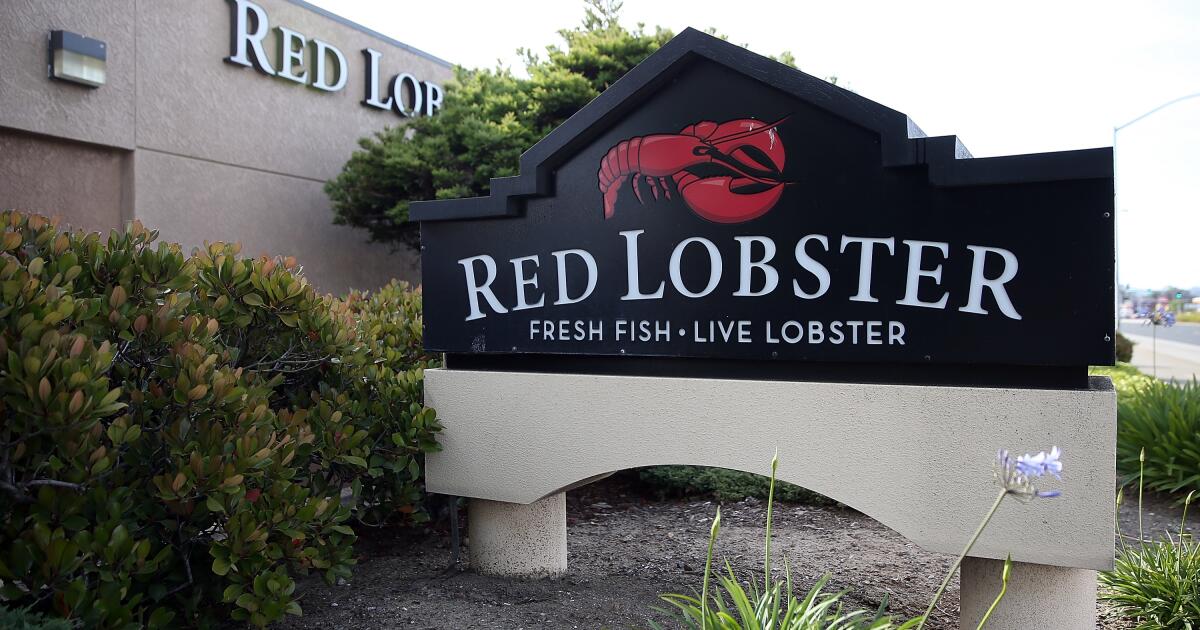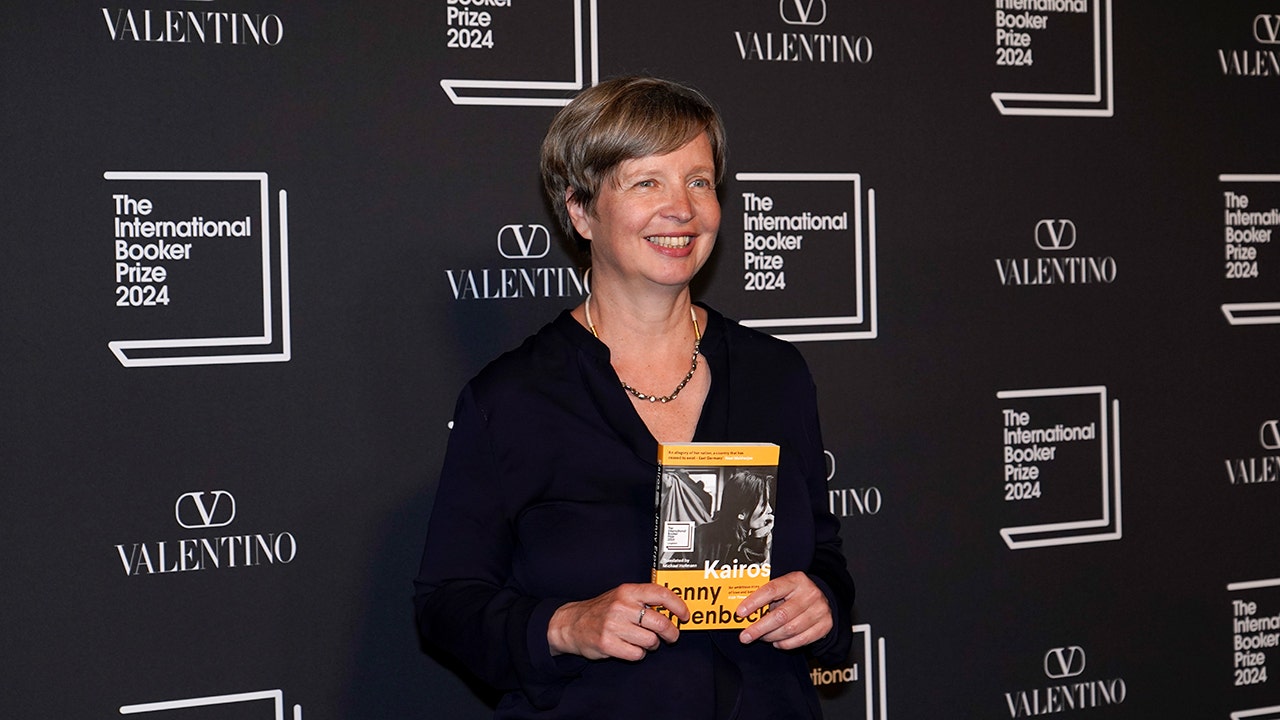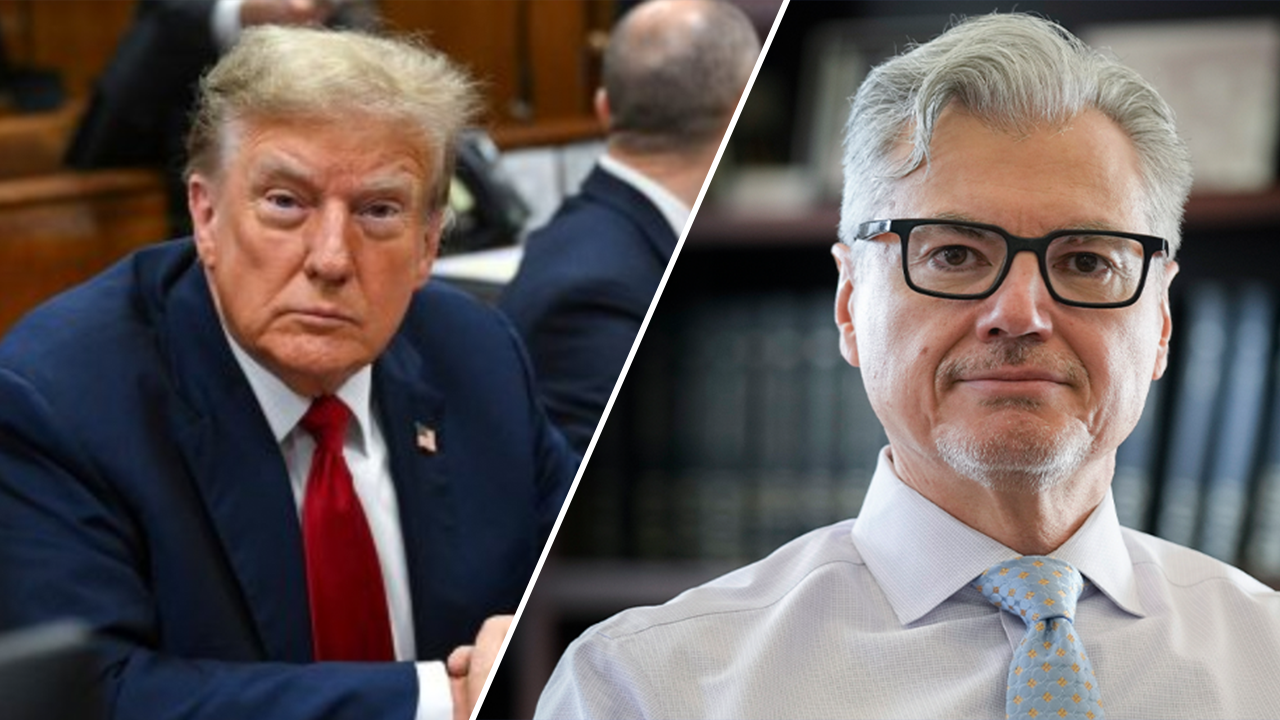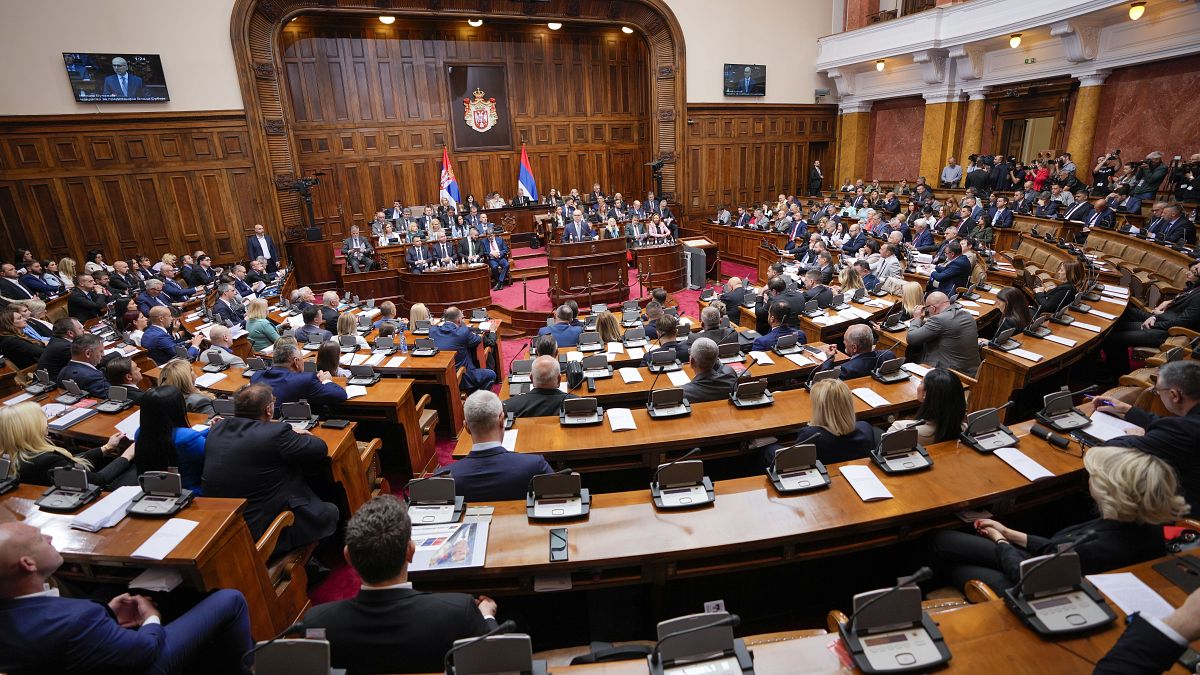Business
Campaign to erect new city on Solano County ranchland submits signatures for November ballot

A billionaire-backed vision to erect an idealistic new city on scrubby grassland in rural Solano County is one step closer to becoming reality.
On Tuesday, the Bay Area tech leaders behind the campaign, dubbed California Forever, held a news conference to announce that they had turned over more than 20,000 voter signatures to the Solano County registrar in support of putting the issue before local voters. If the county validates at least 13,062 of those signatures, the measure would go before voters in November, seeking to amend zoning codes to allow the residential project to be built on agricultural land.
“Solano voters have made their first decision, and they have made it loud and clear,” said Jan Sramek, a former Goldman Sachs trader who is chief executive of California Forever. “People from all walks of life, all parts of the county are all saying the same thing. They are saying, ‘Yes, we want to have a say in the future of this place that we love.’ ”
John Gardner, the county’s assistant registrar of voters, confirmed his office had received the California Forever signatures Tuesday morning.
Gardner said the endeavor marks the first citizens-led ballot initiative in Solano County in more than 30 years. His office has until June 11 to conduct a preliminary review to determine whether enough valid signatures were submitted to put the measure to a vote.
Along with Sramek, backers of the project include LinkedIn co-founder Reid Hoffman, venture capitalist Marc Andreessen, and Patrick and John Collison, who founded the payment-processing company Stripe. As part of their campaign, California Forever in March released an aerial view of the group’s plans for a community of tens of thousands of homes, surrounded by open space and trails, using renewable energy sources.
Backers tout the project as an innovative way to create more affordable housing in close proximity to the Bay Area. The designs call for transforming 18,000 acres now dedicated to ranching and wind farms into a community of 50,000 residents that grows, over time, to as many as 400,000. The project promises 15,000 higher-paying jobs in manufacturing and technology, as well as parks, bike lanes and a solar farm.
Even if the measure is certified for the November ballot and voters approve it, the project faces a number of challenges and regulatory hurdles. Chief among those are additional approvals, including from the federal government, and the specter of lawsuits from environmental groups that have signaled they intend to take the nascent effort to court.
The project’s development began years ago with a series of mysterious land purchases by a secretive LLC called Flannery Associates. The group bought thousands of acres of farmland, totaling more than $800 million, over several years, raising concerns it was a front for foreign actors seeking to spy on nearby Travis Air Force Base.
Instead, the group’s members were revealed not as spies but as titans of the tech industry laying the groundwork for a model city that California Forever and its supporters say will help recast California’s image. While environmentalists and other critics have questioned that claim, the outfit pledges that the city will be green, walkable and socioeconomically diverse.

Business
Column: It wasn't just the endless shrimp — Red Lobster's corporate owners drove it into bankruptcy

On the surface, the story of Red Lobster’s bankruptcy is about one of the seven deadly sins: gluttony.
The most eye-catching manifestation of that sin, as my colleague Marisa Gerber reported, was the chain’s experience with its $20 all-you-can eat shrimp promotion, which attracted families that parked themselves in the restaurants for hours at a time, consuming mass quantities.
But that doesn’t account for the gluttony of Red Lobster’s former private equity owners, San Francisco-based Golden Gate Capital, or its subsequent corporate owners, the huge Bangkok-based seafood conglomerate Thai Union.
Red Lobster’s real estate sale gives its new owners little room for error.
— Restaurant analyst Jonathan Maze (2014)
According to Sunday’s bankruptcy filing by the chain’s new management, the chain was saddled with suffocating leases at “above-market” rents; these were the product of a financing deal entered into by Golden Gate. Thai Union, the filing insinuates, pressured the company into “burdensome supply obligations” that had little to do with the restaurants’ actual needs.
Golden Gate declined to comment. A Thai Union spokesman told me via email that the accusations in the filing are “meritless” and that it intends to continue its 30-year relationship with Red Lobster as a supplier.
That suggests that Thai Union sees more profit from selling shrimp to the chain than it did as a shareholder.
Put all this together, and it becomes clear that a major cause of Red Lobster’s financial collapse was the machinations of its owners.
Indeed, the chain got flipped several times among owners looking for a big payoff; when their expectations were disappointed, they sold it off.
As the bankruptcy filing put it, the chain “has gone from a privately-owned enterprise, to part of a publicly-traded organization, and then back to private again.”
It was founded as a single Orlando restaurant in 1968 by Bill Darden, then acquired by General Mills, which then spun off Red Lobster along with its Olive Garden chain as Darden Restaurants. Darden sold Red Lobster in 2014 to Golden Gate, which sold it in stages to Thai Union and exited ownership entirely in August 2020.
At the end of last year, Thai Union, which had bought a minority stake in the chain for $575 million in 2016 and purchased the rest for an undisclosed sum as a member of an investment consortium in 2020, wrote down its stake in Red Lobster to zero, taking a $527-million charge.
Throughout that period, Red Lobster faced a raft of challenges. Having made its nationwide mark in the 1980s and 1990s as America’s first “casual dining” chain—a step up from fast food but short of premium-priced sit-down fare—it now has about 550 company-owned locations in the U.S.
(The bankruptcy filing says Red Lobster’s “rich history … spans seven decades,” but its arithmetic is off: It’s only been in existence for 56 years.)
As time went on, Americans’ tastes changed and seafood-only restaurants fell out of favor. Then came the pandemic. According to the bankruptcy filing, the restaurants’ guest count is still about 30% below its pre-pandemic level. Over the last year, its operating earnings have fallen by 60%. The chain lost $76 million in fiscal 2023.
As the headwinds gathered, Red Lobster’s management changes were as dizzying as its ownership changes. From 2021 to now, the company had four CEOs, including one who lasted eight months in 2021-22.
After that the company went without a CEO for 17 months; the new incumbent assumed office in last September and was succeeded in March by Jonathan Tibus, a turnaround specialist who is now in charge. Each new CEO arrived with new strategic ideas before giving way to a successor who tried to undo the previous strategy and impose a new one.
If one is looking for the original sin in Red Lobster’s decline, however, a good candidate would be the deal that brought it under Golden Gate Capital’s ownership. The private equity firm bought the chain from Darden for $2.1 billion, financing the sale in part by selling the real estate underlying 500 restaurants to the real estate firm American Realty Capital for $1.5 billion.
This was a sale-leaseback transaction, in which Red Lobster was instantly converted from the owner of its property to a tenant on the same property. The leases were typically long-term — as long as 25 years — with annual rent increases of 2% baked in. They were also triple-net leases, meaning that the restaurants were responsible for paying operating costs, property taxes and insurance.
Red Lobster thus lost a great deal of flexibility for closing underperforming restaurants and cutting costs. The bankruptcy filing says that a material portion of the leases charge above-market rates. Of the company’s lease obligations of $190.5 million last year, more than $64 million was for “underperforming stores.”
This exacerbated the company’s financial problems. “Given the Company’s operational headwinds and financial position,” the filing says, “payment of lease obligations associated with non-performing leases has cause significant strains on the Company’s liquidity.” In other words, the sale-leaseback arrangement was draining the company of cash.
The sale-leaseback deal raised eyebrows among restaurant analysts at the time. “Let’s get this straight,” wrote Jonathan Maze of Restaurant Finance Monitor: “We’re taking a brand with badly falling sales and earnings, and will then load it up with rent costs?”
At the outset, Red Lobster would be paying $118.5 million in cash rent, about half the chain’s annual operating earnings, he wrote. “Red Lobster’s real estate sale gives its new owners little room for error,” he added presciently. Golden Gate declined to comment.
It’s proper to note that this sort of transaction resembles private equity deals that have been blamed for the deterioration of consumer businesses in other industries. Private equity takeovers often result in large-scale worker layoffs and the imposition of heavy debt on companies that can hasten their decline, as well as bringing higher costs to consumers.
The pattern was for private equity funds to “purchase controlling interests in companies for a short time, then load them up with debt, strip them of their asset, extract exorbitant fees, and sell them at a profit — implementing drastic cost-cutting measures at the expense of workers, consumers, communities, and taxpayers,” Democratic lawmakers wrote in 2019.
Buyouts of private for-profit colleges, for example, resulted in jacked-up tuition charges and higher student loan balances among students, according to a 2019 study of several such deals; these were accompanied by “sharp declines in student graduation rates, loan repayment rates, and labor market earnings.”
And local newsrooms across the country have been gutted by the private equity firm Alden Global Capital, which has become famous for aggressive cost-cutting and uninterest in the quality of the resulting products; by early this decade Alden was the owner of some 200 newspapers, including the Chicago Tribune, Baltimore Sun and San Diego Union-Tribune.
When Golden Gate sold off its stake in the chain, the restaurants were carrying a heavy debt load; some $375 million in debt was added to the chain’s balance sheet in May 2014 to help fund Golden Gate’s acquisition, Moody’s reported. The debt came due in 2021.
That brings us to Thai Union. One of the world’s largest seafood companies, Thai Union owns Chicken of the Sea tuna, among other holdings. Its involvement in the canned-tuna business brought it grief in 2018, when the federal government alleged a price-fixing conspiracy involving Chicken of the Sea, Bumble Bee and StarKist.
The government discovered the deal when it subjected a proposed merger between Chicken of the Sea and Bumble Bee to antitrust scrutiny. As I wrote at the time, Thai Union “promptly bailed out of the merger and fessed up to the Justice Department in return for amnesty from prosecution.”
Thai Union originally bought into Red Lobster as a strategic foray into retail dining. According to the bankruptcy filing, Thai Union eventually pressured the restaurant chain to increase its demand for shrimp, a Thai Union product.
One result was the conversion of the chain’s “Ultimate Endless Shrimp” offer, which had been an occasional limited-time promotion, into a permanent menu item. The filing says that was done, despite “significant pushback” from members of the management team, at the behest of Paul Kenny, who had been named acting interim CEO in April 2022 “at the direction of Thai Union.”
The current management says that Thai Union “exercised an outsized influence on the Company’s shrimp purchasing,” circumventing the chain’s “traditional supply process” and ignoring its demand projections. It says that Kenny took steps to eliminate two suppliers of breaded shrimp, giving Thai Union “an exclusive deal that led to higher costs to Red Lobster.”
The current management says it’s “investigating the circumstances around these decisions.”
The bottom line is that it’s not unreasonable to blame some of Red Lobster’s problems on its endless shrimp promotion, but that it’s more important to examine how that promotion came about in the first place.
The answer, according to the management team tasked with extricating the company from its financial mire, is that it was forced on the company by self-interested owners.
One had no experience running a restaurant chain, didn’t notice the signs that it was heading toward a fiasco and may not have cared as long as it could keep pumping shrimp into the chain’s pipeline. The other collected a healthy subsidy for its multibillion-dollar acquisition, and perhaps didn’t notice or care that it was tying one hand behind the back of the chain’s management as it faced a sea change in consumer habits.
Red Lobster became a plaything for financial engineers, a condition that almost never — if ever — leads to an improved consumer experience and greater profits in the long term. It’s one thing to blame Red Lobster’s problems on consumers pigging out on shrimp, but who were the real pigs in this saga?
Business
California Supreme Court to hear oral arguments on Uber, Lyft-backed Prop. 22

California’s Supreme Court will hear arguments Tuesday on the constitutionality of Proposition 22, the voter-approved law that classified drivers working in the gig economy as independent contractors rather than full-fledged employees.
The court must decide whether the law, which Uber, Lyft, Doordash and other app-based delivery companies pushed with a $200-million campaign in 2020, unlawfully interferes with the state Legislature’s authority to provide workers’ compensation protections to those who are injured on the job.
How the justices ultimately rule will have enormous implications for the delivery and ride-hail companies that have argued their ability to operate in California depends on the law’s survival, as well as the million-plus people in California who drive for them. A victory for the group of drivers and unions that brought the lawsuit challenging Proposition 22 would leave Uber, Lyft and companies like them to decide whether to continue operating in California, one of their largest markets.
Under the law, drivers are considered to be their own employers, a designation that frees the companies they drive for from having to provide benefits that traditional employees in the state are entitled to, such as overtime, sick leave and a minimum wage.
The Service Employees International Union and a group of drivers first brought the lawsuit challenging Proposition 22 in January 2021, just after the law went into effect. They unsuccessfully sought to take the case directly to the California Supreme Court and were left to pursue the case in a lower court.
In a sweeping decision, Alameda County Superior Court Judge Frank Roesch ruled in August 2021 that Proposition 22 was unconstitutional and unenforceable.
The law failed to pass constitutional muster, Roesch wrote, because it infringed on the power of the Legislature explicitly granted by the state Constitution to regulate compensation for workers’ injuries.
“If the people wish to use their initiative power to restrict or qualify a ‘plenary’ and ‘unlimited’ power granted to the Legislature, they must first do so by initiative constitutional amendment, not by initiative statute,” the judge wrote.
In March 2023, a split three-judge panel from a state appeals court largely reversed that ruling, finding the law did not impede the Legislature’s authority and upholding the legality of the law’s provision classifying drivers as contractors.
Supporters of the law celebrated the ruling as a “historic victory for the nearly 1.4 million drivers who rely on the independence and flexibility of app-based work to earn income, and for the integrity of California’s initiative system.”
Proposition 22 has remained in effect throughout the appeals process.
When they make their case Tuesday, attorneys for the drivers and the union are expected to press ahead with their assertion that the law improperly leaves gig economy drivers who suffer injuries while working without access to compensation enjoyed by traditional employees in the state.
The state Constitution “grants the Legislature unlimited power to protect workers with a complete workers’ compensation system,” said Scott A. Kronland, an attorney representing SEIU and the drivers.
A coalition backed by Uber, Lyft and DoorDash, called the Protect App-Based Drivers & Services coalition, meanwhile counters that courts should respect the will of voters, who voted by a 58% margin to approve the law.
“The court for 100 years has not found a restriction on voters’ initiative power,” said Kurt Oneto, an attorney representing the coalition.
On Monday around 9 a.m., scores of drivers gathered outside the office of SEIU Local 721 in Westlake, preparing to travel as a car caravan up to San Francisco to rally outside the courthouse during oral arguments. They loaded into dozens of honking cars lined up along a nearby intersection, plastered with signs denouncing Proposition 22 as “bad for workers, bad for the economy, bad for California.”
Business
Scarlett Johansson also thinks OpenAI's new voice sounds like her. She's not happy about it

When OpenAI debuted its new voice assistant technology this month, it immediately drew comparisons to the 2013 Spike Jonze sci-fi film “Her.”
As it turns out, the likeness may have been too close for comfort.
Actor Scarlett Johansson, who voiced the computer program in “Her,” said she hired lawyers after discovering OpenAI released a ChatGPT voice that sounded eerily similar to hers without her granting permission.
In a Monday statement, Johansson said she was approached by OpenAI’s chief executive, Sam Altman, in September to voice the ChatGPT 4.0 system, but she declined to participate. Altman had pursued Johansson to lend her voice to the app because “he felt that my voice would be comforting to people,” Johansson said in her statement.
But after she declined, she was angered and shocked to hear a voice used in a demo by OpenAI that sounded like hers. Two days before the demo, Johansson said that Altman contacted her agent asking the actor to reconsider.
In the movie “Her,” Johansson plays “Samantha,” the disembodied voice of a computer who provides friendship and, eventually, love to a lonely man played by Joaquin Phoenix.
“In a time when we are all grappling with deepfakes and the protection of our own likeness, our own work, our own identities, I believe these are questions that deserve absolute clarity,” Johansson said in a statement. “I look forward to resolution in the form of transparency and the passage of appropriate legislation to help ensure that individual rights are protected.”
OpenAI on Monday said it is pausing the use of the voice known as “Sky,” which some people say sounds like Johansson.
“We’ve heard questions about how we chose the voices in ChatGPT, especially Sky,” OpenAI posted on X on Monday. “We are working to pause the use of Sky while we address them.”
Altman seemed to invite parallels to the film in his announcement of the interactive voice feature, saying in a blog post that it “feels like AI from the movies.” “Her” was nominated for multiple Oscars, with Jonze winning the Academy Award for original screenplay.
On May 13, Altman posted the word “her” on X, which many observers interpreted as a direct reference to the Oscar-winning movie.
Despite the striking sonic resemblance, OpenAI said that Johansson did not actually provide the voice of Sky, one of multiple voice options available on the app. Rather, another actor was using her own “natural speaking voice,” OpenAI said in a Monday blog post.
“We believe that AI voices should not deliberately mimic a celebrity’s distinctive voice,” the company said.
Altman in a statement said that the company had cast the voice actor behind Sky’s voice before it had reached out to Johansson.
“The voice of Sky is not Scarlett Johansson’s, and it was never intended to resemble hers,” Altman said in a statement. “Out of respect for Ms. Johansson, we have paused using Sky’s voice in our products. We are sorry to Ms. Johansson that we didn’t communicate better.”
The controversy comes at a time when concerns have been raised within the entertainment industry about whether copyrighted material is used to train AI models.
OpenAI has said its large language models, including those that power ChatGPT, are developed through information available publicly on the internet; material acquired through licenses with third parties; and data its users and “human trainers” provide.
The company has said it believes training AI models on publicly available materials on the internet is “fair use.”
But some media outlets, including the New York Times, have sued OpenAI, concerned about how its stories are used by the tech company.
Sony Music Group is in the process of sending out hundreds of letters to AI developers and music streaming services, including OpenAI and Google, warning them to not use its artists’ music to train generative AI tools without its permission. Actors and writers also have raised concerns about AI’s impact on their livelihoods.
Talent agencies are being proactive in protecting their clients against unauthorized use of their likeness and voice. Century City-based Creative Artists Agency is helping clients through the Vault, which scans clients’ bodies and records their movements and voices to create a digital version of them to protect against copyright infringement.
Johansson is a client of CAA. CAA declined to comment.
OpenAI said that the voices for ChatGPT — called Breeze, Cove, Ember, Juniper and Sky — are from voice actors who went through an audition process. More than 400 people applied. Some of the characteristics OpenAI was seeking include “a voice that feels timeless” and “an approachable voice that inspires trust.”
The selected actors came to San Francisco to record their voices in June and July of 2023, and their voices were added in September of that year, the company said. The company said the actors were compensated with “above top-of-market rates” and that they were aware of the intentions and scope of the project.
“To protect their privacy, we cannot share the names of our voice talents,” OpenAI said.
-

 News1 week ago
News1 week agoSkeletal remains found almost 40 years ago identified as woman who disappeared in 1968
-

 World1 week ago
World1 week agoIndia Lok Sabha election 2024 Phase 4: Who votes and what’s at stake?
-

 World1 week ago
World1 week agoUkraine’s military chief admits ‘difficult situation’ in Kharkiv region
-

 Movie Reviews1 week ago
Movie Reviews1 week agoAavesham Movie Review
-

 News1 week ago
News1 week agoTrump, Reciting Songs And Praising Cannibals, Draws Yawns And Raises Eyebrows
-

 World1 week ago
World1 week agoCatalans vote in crucial regional election for the separatist movement
-

 Movie Reviews1 week ago
Movie Reviews1 week agoUnfrosted Movie Review: A sweet origins film which borders on the saccharine
-

 Politics1 week ago
Politics1 week agoNorth Dakota gov, former presidential candidate Doug Burgum front and center at Trump New Jersey rally



/cdn.vox-cdn.com/uploads/chorus_asset/file/25458735/onexplayer_comparo.jpg)










